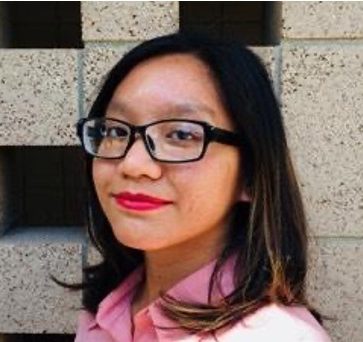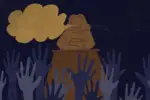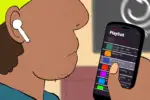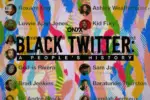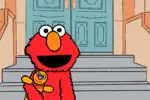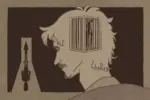Are you a concise writer or a verbose one? I started out as the latter. Like many people, I was a writer who would use two words when one was sufficient. I still do sometimes. However, it’s easier to be concise with practice. Participating in Twitterature — Twitter literature — helped me practice brevity.
With just 280 characters, people have to exercise concision. Rather than a constraint on creativity, many people use this opportunity to create short works such as micro-fiction and micro-poetry.
https://www.instagram.com/p/BRmkTQsgXz0/
Ernest Hemingway was rumored to be the author of a micro-fiction: “For sale: baby shoes, never worn.” Forget 280 characters; Hemingway did it in six words. Although he predates social media, Hemingway probably would have rejoiced in Twitterature.
Microfiction: Bite-Size Tales
As an avid reader, I usually commit to reading the entirety of a novel. However, life often gets in the way, and some books are left unfinished. I’m guilty of having never finished “Atlas Shrugged” by Ayn Rand. But with Twitterature, you can always complete a story in one tweet.
For example, A Small Fiction, written by James Mark Miller, tweets microfiction — short fictional pieces. It ranges from science fantasy to supernatural. I love reading A Small Fiction, especially the humorous and sometimes horrific twists. It’s always interesting to see how one can build a world in a few sentences. The less details, the more the imagination can run.
"Why were you so wary of us when we first arrived?" the aliens said.
"You had more power than us, we thought you'd abuse it," the humans said.
"Why?"
"We'd never met other sentients. We only had ourselves as examples."
— A Small Fiction (@ASmallFiction) May 30, 2020
Another famous microfiction author is T.R. Darling. Unlike Miller, T.R. Darling is known for creating stories in Twitter threads. I say stories, but the current project is actually one running story about a character named Roses and the Twitter audience — you. It’s almost like a choose-your-own-adventure narrative as T.R. Darling releases live polls for each tweet to advance the plot. It is exciting that readers are encouraged to engage in the writing process.
Digestible and interactive stories are the way to go in the era of social media and short attention spans.
What is the extent of Twitterature?
Twitterature spans over various genres, including creative nonfiction and fan fiction. James Breakwell, also known as Exploding Unicorn, tweets hilarious snippets of his life as a father of four daughters. Instead of prose, his tweets are formatted in dialogue to recreate his conversations with his children.
As for Twitter fan fiction, users create stories in a similar dialogue format, or write short stories expanded over a series of threads. I have even seen people include fan art, GIFs and memes. The sky is the limit, and Twitter users take advantage of this platform.
After being exposed to many forms of Twitterature, I wanted to get in on the action. This led to the creation of Boba Milk Tea Fiction, in which I tweet Asian American micro-stories. After all, why can’t I tweet stories about the Asian American experience? I would argue that we need more people to tell their stories.
They stared at the mirror. Long hair. Thin waist. Pale skin. They had none of that.
“You can be whoever you want to be.”
And yet.
Tom wanted an Asian wife. Feminine and servile.
Short hair. Love handles. Olive skin. They were just themselves.
— Boba Milk Tea Fiction 🍵 (@BobaFiction) April 22, 2020
To be honest, this idea came to me as I was revising my creative project for my Asian American course. A Twitter account dedicated to Asian American stories soon replaced a six-page short story. I wanted to challenge myself to tweet one story per day.
Hindsight is 20/20. As Scottish American writer Gilbert Highet once said, “People learn more quickly by doing something or seeing something done.”
The more I tweeted, the more I realized the difficulties in covering complex issues, such as racial politics, in just 280 characters. Will my readers think that the characters are white unless I state their ethnicity as otherwise? I feared the prevalence of the “white as default” belief. For example, the movie “The Hunger Games” faced backlash after its release when viewers realized that Rue was a black girl. Some people lost sympathy for her character.
Not only does this mindset reinforce white normativity, but it also cements the idea that black lives don’t matter, but that’s not true because black lives do matter, and their narratives are especially important to be told. You only have to look at the injustice done to George Floyd as evidence.
So, what did I do? At first, I used clear markers to establish my characters’ ethnicities, including dialogue about race and bilingualism. After a while, I grew more fearless and started using metaphors. In one story, I described the issue of the racial slur “banana,” which refers to a person of Asian ethnicity who is yellow on the outside but white on the inside, highlighting the complexity of mixed identity. It’s more than just skin deep.
At one point, I started reading poetry by people of color for direction, such as “Caged Bird” by Maya Angelou and “How I Got That Name” by Marilyn Chin. Inspired, I incorporated concepts from my coursework. Boba Milk Tea Fiction became an amalgamation of my experiences and everything I learned put into application.
Creative nonfiction, poetry, stories that spanned into threads — I tried my hand at different things. It’s an ongoing experiment to find new ways to convey my narrative.
At the end of the day, my goal is to tell a story with which I’m most familiar: an Asian American story. Diversity and representation are critical to minorities. Yet, only 22% of the characters in the books released in 2016 were people of color.
We need a greater variety of stories that narrate people of different colors, from different religious backgrounds and from different social strata. We need characters who are queer, struggle with multiculturalism and fall short of normative beauty standards. As a child, I failed to realize how the stories I read didn’t reflect my identity or experience. I hope that future generations can see themselves in the characters in the books they read and the media they consume.
Boba Milk Tea Fiction is one small part of Twitterature, but it dreams big. Everyone has a story to say. What’s yours?




